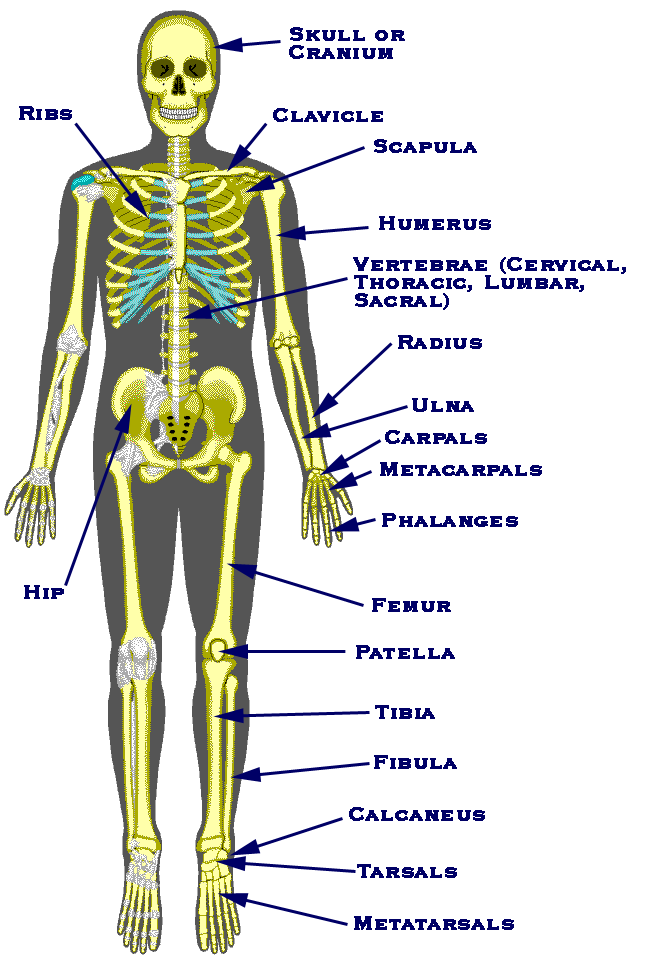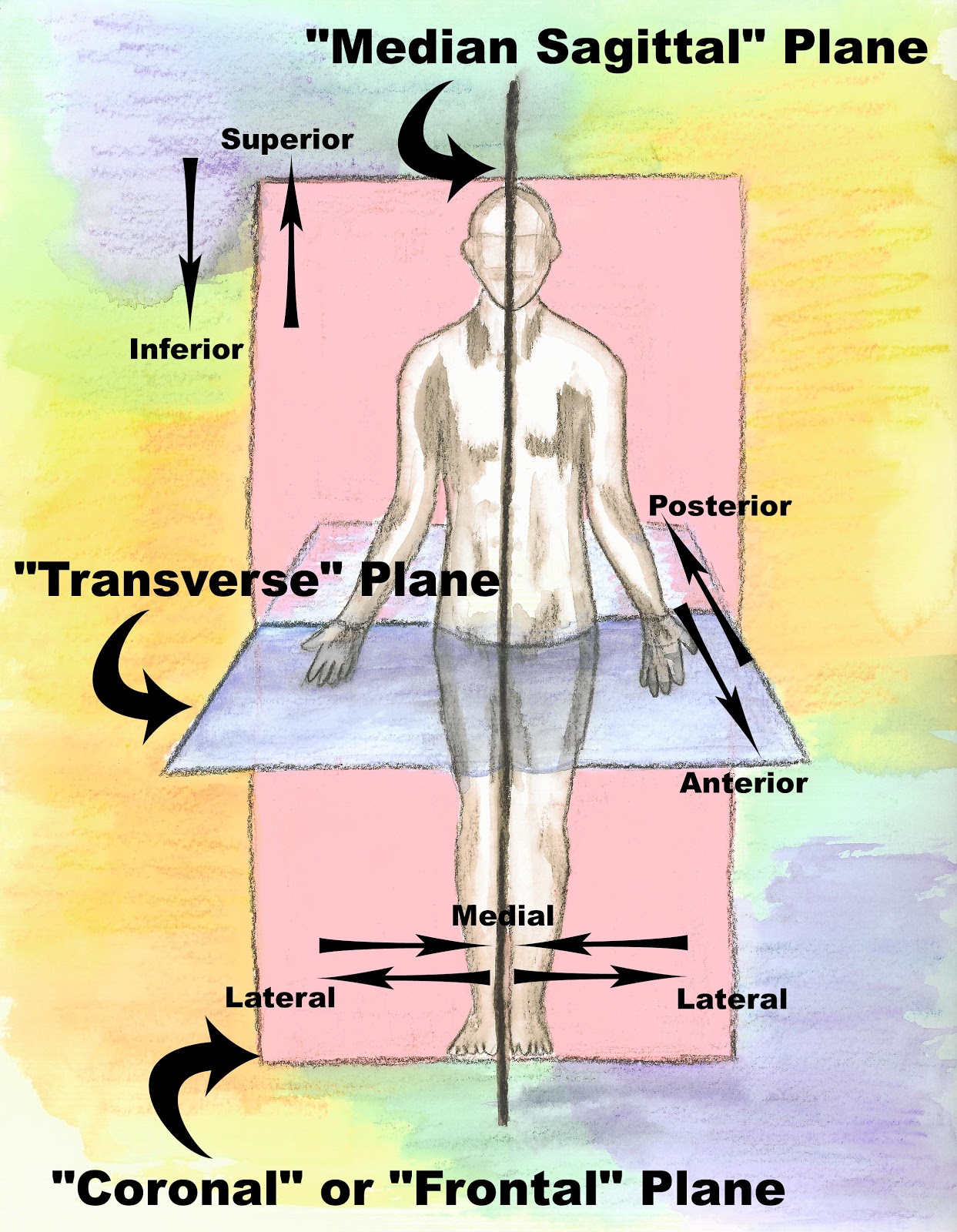

Obviously you can see that if this model was to turn his palm, so they were facing away from you, then the thumb would be closer to the midline, but we would still say that the thumb is a lateral structure, relative to the little finger, because in the anatomical position that's how it is. And just going back to the importance of the anatomical position, we would say that the little finger is medial to the thumb, because in the anatomical position, the little finger is closer to the midline.

medial and lateral just refer to either closer, or further away to the midline. A medial structure is a structure that is closer to that median sagittal plane that I talked about a bit before.For instance, going back to the sternum, dunno why I'm choosing the sternum but, the sternum is medial to the humerus, the sternum is medial to the ribs. Medial and lateral means close to, medial is close to the midline, and lateral is further away from the midline. Anterior and posterior refer to the front and the back of the body. The sternum here, just zoom in a bit, is anterior to the lungs, it's anterior to the heart, anterior to the vertebrae, or you could say the vertebrae is posterior to the sternum, whatever you like. Anterior and posterior - anterior means closer to the front of the body, and all these terms are relative to the anatomical position, anterior and posterior describe structures relative to the front and the back of the body.įor example, the sternum is anterior to the heart, I’ll just show you that. I'll just run through what these mean and I'll show you a few examples, hopefully you'll be able to remember what these all mean in the future. When you learn about anatomy, or you're reading textbooks or watching these tutorials, you'll hear a lot of terms that are thrown about to help describe the relative locations of structures within the body, like anterior, posterior, superficial, deep, proximal, distal, superior, inferior, rostral, caudal, dorsal ventral. Just going back to the sagittal plane, the plane that divides the body exactly equally into right and left halves is known as the median sagittal plane. And then the horizontal, transverse, axial, whatever you want to call it, plane, runs as you could probably guess - horizontally, and it divides the body into superior and inferior parts. And it runs perpendicular to the sagittal plane, it runs down here. The coronal plane is oriented vertically and divides the body into anterior and posterior halves. And it runs straight down the middle here.

the sagittal plane is a plane that divides the body into left and right halves. They’re three major groups of planes in the human body, the sagittal plane, the coronal plane and the axial plane or the transverse plane - transverse, horizontal, axial are used interchangeably. You can imagine if, even if the hand is facing the other way, the patient is laying on the bed, upside down standing on their head, whatever, you're always talking about structures relative to the anatomical position.įirstly I'm just going to talk a little bit about anatomical planes, because people tend to talk about them. When you describe anatomical structures, you talk about them with reference to this anatomical position the little finger is medial to the thumb. This is the anatomical position, and if I just zoom in a bit on his head, technically speaking, in the anatomical position, the inferior margin of the orbit should be level with the top of the external auditory meatus. This model here is standing in the anatomical position, you can see he is standing facing forwards with his face looking towards you, his palms are facing outwards and his forearms are supinated, and his feet are facing forward like that. Anatomical Positionįirstly, I'm going to talk about the anatomical position. Okay this is a tutorial on anatomical terms, and it's a basic tutorial which should hopefully help you to understand how different terms in anatomy are used to describe the relative positions different structures in the body.


 0 kommentar(er)
0 kommentar(er)
